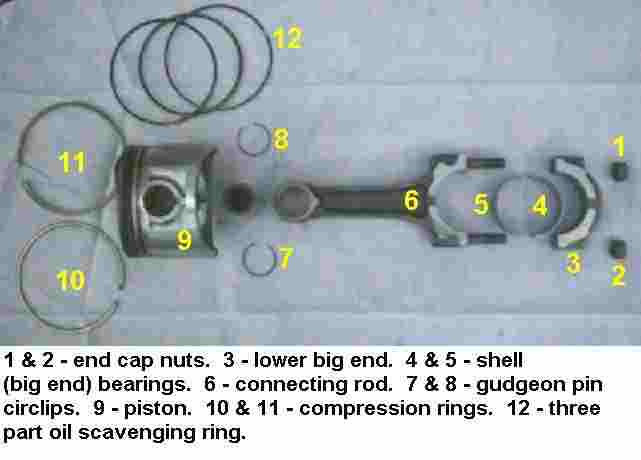 Connecting
rod, shell bearings, piston, rings and end caps.
Connecting
rod, shell bearings, piston, rings and end caps.CX/GL500 Connecting Rod & Piston
The photos show parts from a CX500, but the 650 parts are very similar.
 Connecting
rod, shell bearings, piston, rings and end caps.
Connecting
rod, shell bearings, piston, rings and end caps.
The piston rings sit in grooves machined into the perimeter of the piston, just below the crown.
The compression rings help seal the explosive force of ignition "above" the piston, driving it down the barrel. The lowermost three-part oil scavenging ring scrapes off any oil splash from the bores, and returns it to the sump.
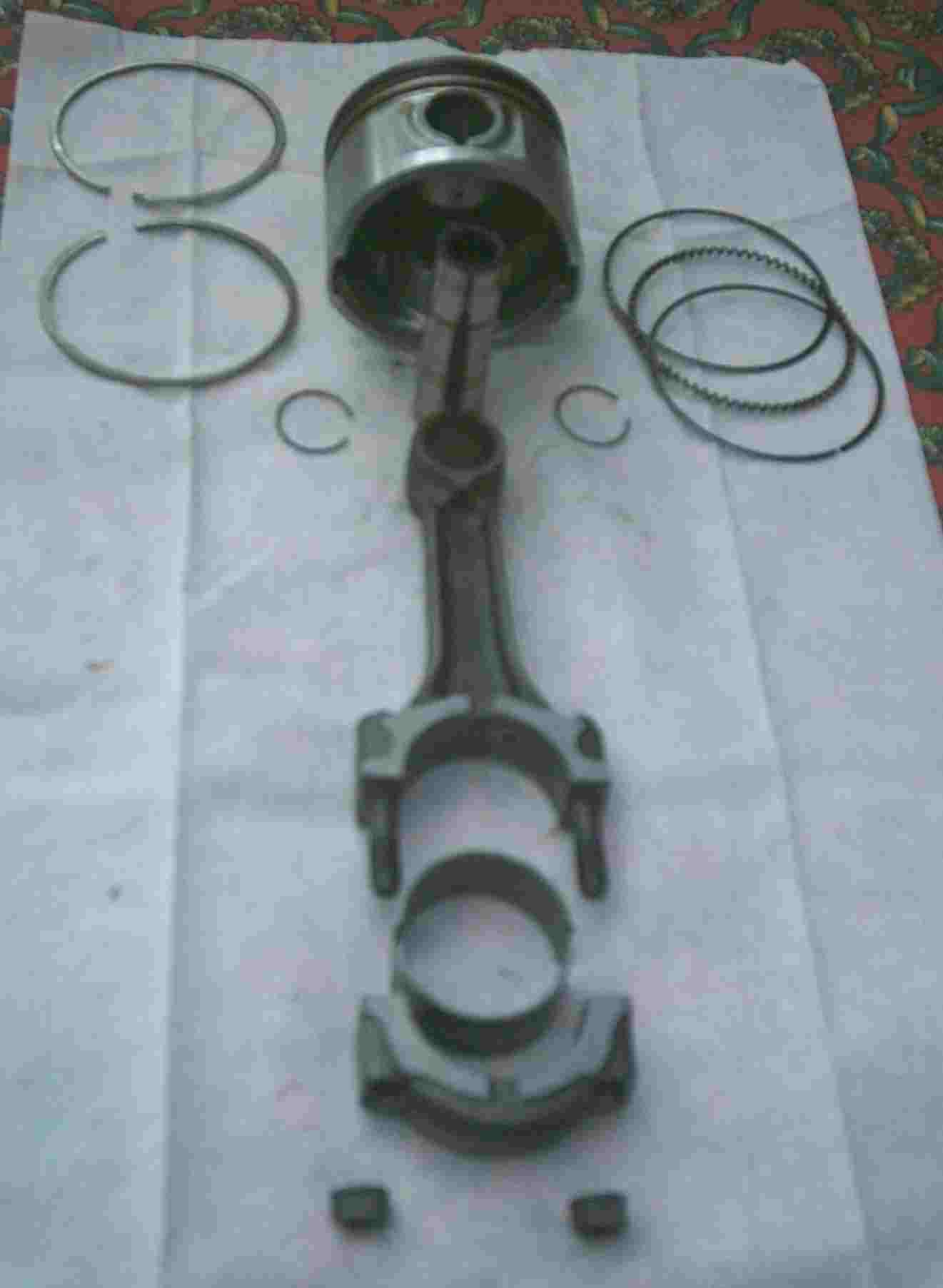 Exploded
vertical view of the same parts.
Exploded
vertical view of the same parts.
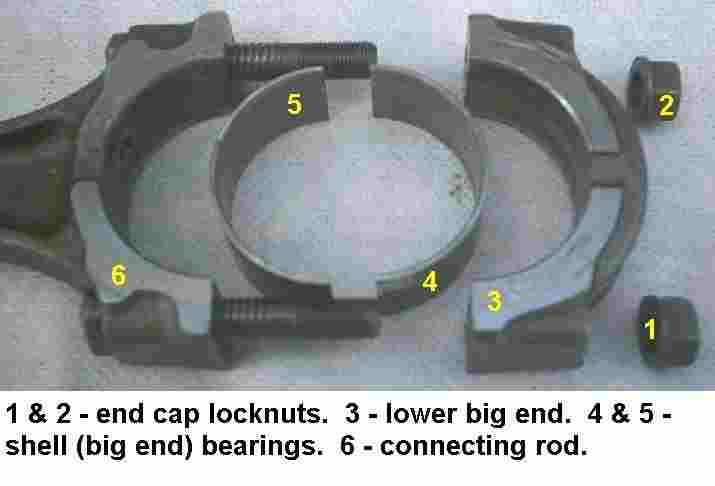 Close-up
of the "big end", showing the two halves of the shell bearing and
how they fit inside the big end.
Close-up
of the "big end", showing the two halves of the shell bearing and
how they fit inside the big end.
The shell bearings should never come into contact with the crankshaft, as they spin in a high-pressure oil bath which lifts them clear of the metal of the crank and also keeps them cool. (This is rather like how a hovercraft appears to float on water.)
If the oil supply fails, or is contaminated, oil pressure drops and ceases to lubricate and cool the shells, and they overheat, eventually welding themselves to the crankshaft.
This is called a "seizure" and is usually fatal for the engine.
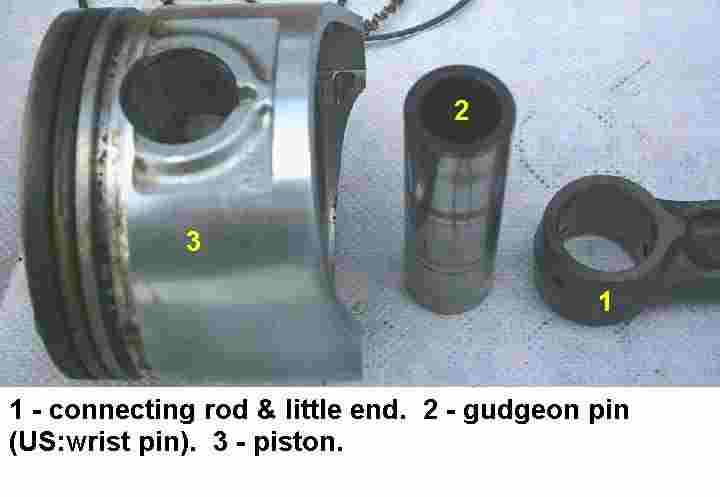 Close-up
of the piston, gudgeon pin (wrist pin to Americans) and little-end.
Close-up
of the piston, gudgeon pin (wrist pin to Americans) and little-end.
The gudgeon pin is hollow steel and slides through the piston side, through the little-end of the connecting rod and into the far side of the piston.
To make sure it doesn't come out, it's held at each end by a steel circlip.
Yoiu can see the small lips on the piston where the circlips are prised out of their grooves during dismantling.
Gudgeon pin circlips are NEVER re-used after being dismantled.
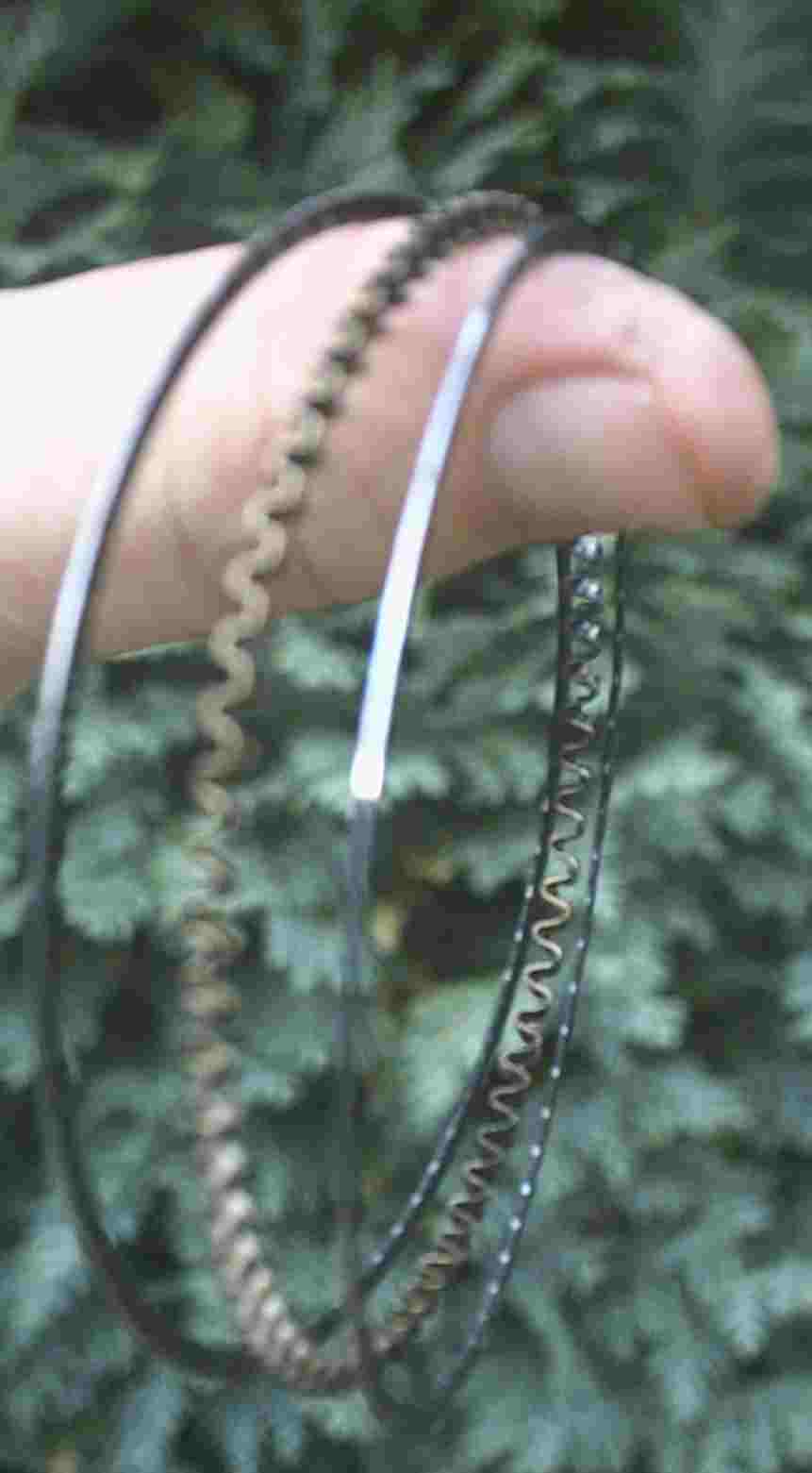 Close-up
of the three-part oil scavenging ring. It consists of a pair of thin steel rings
with a battlement-shaped spring in between. This composite ring is lowermost
on the piston body, and it scrapes oil off the cylinder bores and back into
the crankcase sump. This prevents oil from passing up "above" the
rings, and into the combustion chamber, where it would be burned.
Close-up
of the three-part oil scavenging ring. It consists of a pair of thin steel rings
with a battlement-shaped spring in between. This composite ring is lowermost
on the piston body, and it scrapes oil off the cylinder bores and back into
the crankcase sump. This prevents oil from passing up "above" the
rings, and into the combustion chamber, where it would be burned.
Once the engine has clocked up a very considerable mileage - and on CX engines, this is about 100,000 miles - the compression and oil scavenging rings wear to the point where they fail to seal the bores, and oil gets burned by the engine. Also, the bores themselves wear. The answer is a complete engine stripdown, with the the cylinder bores being "bored out" by 0.5mm, and new pistons and rings being fitted. This is (unsurprisingly) called a rebore and it's not very common on properly maintained CX engines.
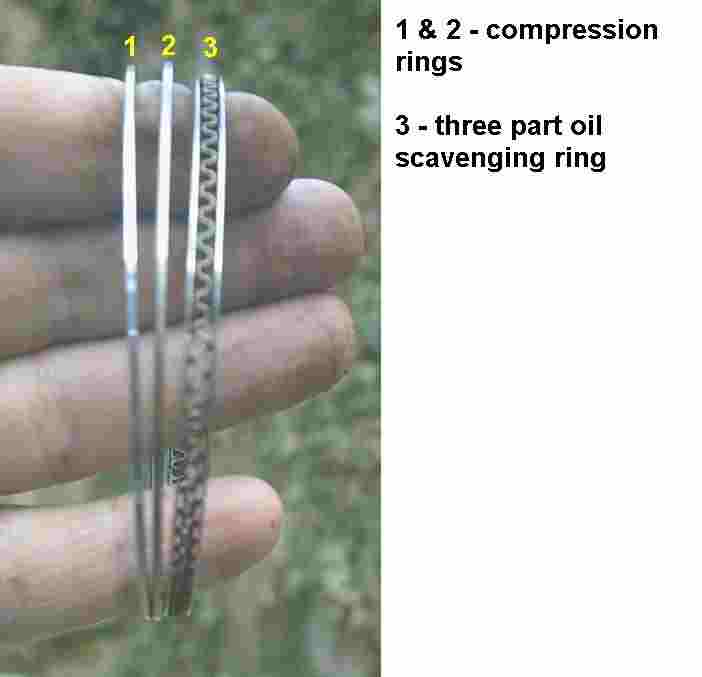 Comparison
photo of all three piston rings. The leftmost ring in the photo goes at the
upper part of the piston body, with the three part oil scavenging ring lowermost.
Comparison
photo of all three piston rings. The leftmost ring in the photo goes at the
upper part of the piston body, with the three part oil scavenging ring lowermost.
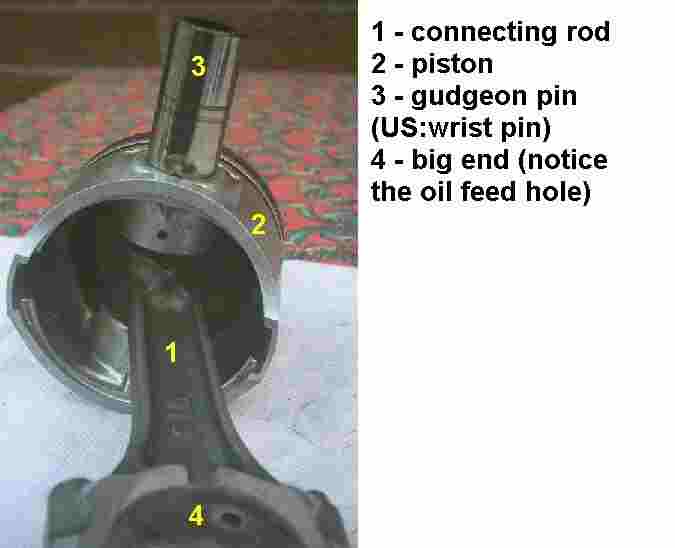 Close-up
of the little-end fitting into the piston. Note the large oil feed hole in the
big-end area, and the smaller oil feed hole in the underside of the piston,
where oil lubricates the gudgeon pin.
Close-up
of the little-end fitting into the piston. Note the large oil feed hole in the
big-end area, and the smaller oil feed hole in the underside of the piston,
where oil lubricates the gudgeon pin.
You are welcome to email me.